Suede is a very popular leather, whether it is for clothes, shoes, or leather goods, compared to smooth leather, suede is more gentle, softer, and brings a sense of luxury at first sight. But there is one thing that the suede cannot beat the smooth leather at all, that is, aging.
If you have paid attention to the service of shoe shine, you know that for shoes with smooth leather, many service providers can almost achieve looking “new”, wearing shoes for 10 years, and after shoe shining, they seem to be worn for 10 days. Even if you shine your shoes at home, this effect can be achieved 70% to 80%. Clean and care of suede is much more difficult. I suggest to many people that you must spray with waterproof spray and that is the best thing you can do on your suede shoes or anything. For renovation, if you are willing to change the color, a darker spray does solve the problem, but the fluff becomes harder. The sense of gentle luxury will be lost as the fluff dries hard.
This leads to a phenomenon that sales of suede shoes are not as good as those of smooth leather. For example, the data I got, Edward Green’s Dover, everyone is reluctant to buy suede option and feel that buying suede at this price is a loss. In fact, completely in terms of material prices, good suede is not cheaper than good smooth leather, or even more expensive.
I don’t like various leather products made of suede leather as well, and the main consideration is that the aging is not very good. I had a Loewe’s camel suede bag, really good-looking, but too easy to get dirty, and cleaning is so desperate.
This pair of Carlos Santos loafers, which I wore for three summers. Heavily worn in the summer of three years, with such a performance, it seems that the aging is not a problem?
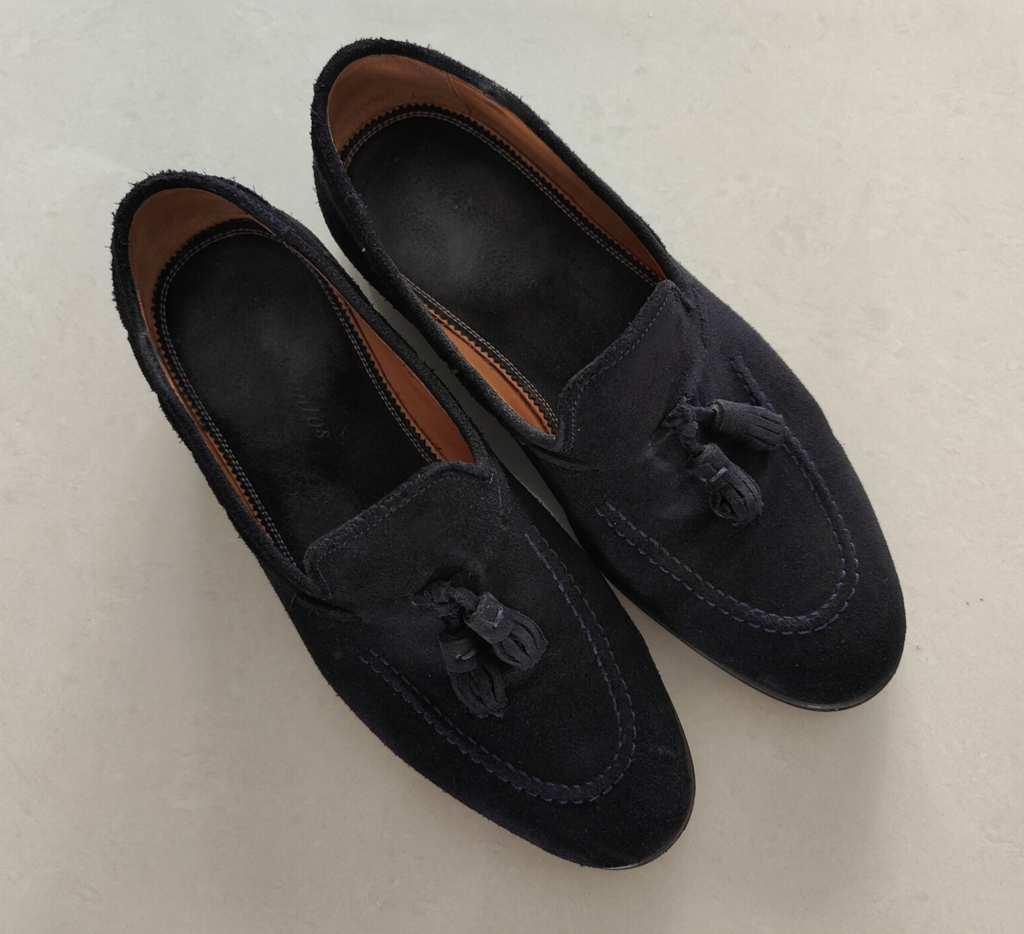
A pair of navy blue tassel loafers. This navy has a little purple, which is interesting. I have a data to share with you. Speaking of loafers, penny or tassel, which is more common? The answer is penny, no doubt, right. But do you know which sells better among all brands in China? The answer is tassel. I didn’t understand it at first, but I understood it after I wore both. Tassel loafer has much less of a problem pressing the instep. On same last, the new shoes all press on the instep, but because Penny Loafer has an extra leather on the instep, you need to withstand double (or several times, nonlinear) pressure when your instep wants to stretch it open. This process is very painful and cannot be solved by wearing it only for 10 times.
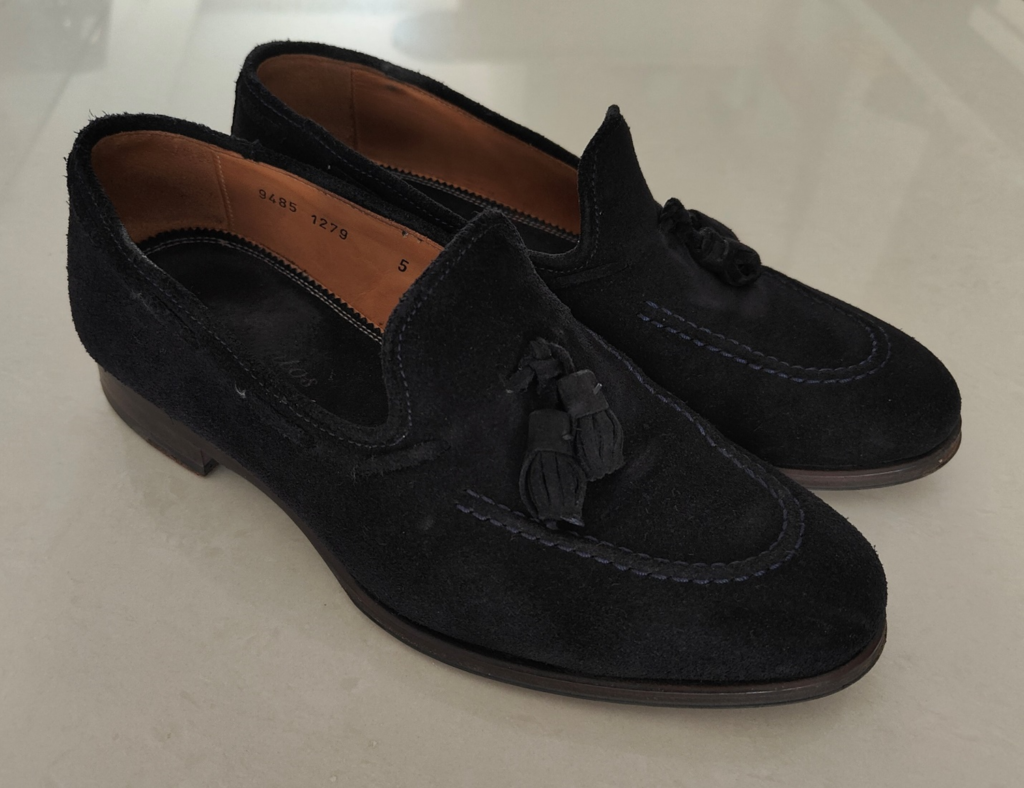
From the state of my shoes, you can see that the front end of the opening, which is the “tongue” position, is cocked up a lot, which is not easy for penny loafer to achieve.
I used to have an opinion about the fit of the loafer that the instep and heel combine to prevent the heel from slipping (falling off). But after wearing it for a long time, I need to update it. For example, this pair, obviously the instep of the foot is impossible to press very tight, but there is no problem of slippage at all. Needless to say, the heel is the right size, the heel can be attached, and the forefoot is because of the formability of the midsole, so that the foot enters it, just like entering the mold, and it will not move. So now it can be said that it is the forefoot fit and the heel wrap that determine the fit of the loafer that has been worn for a long time.
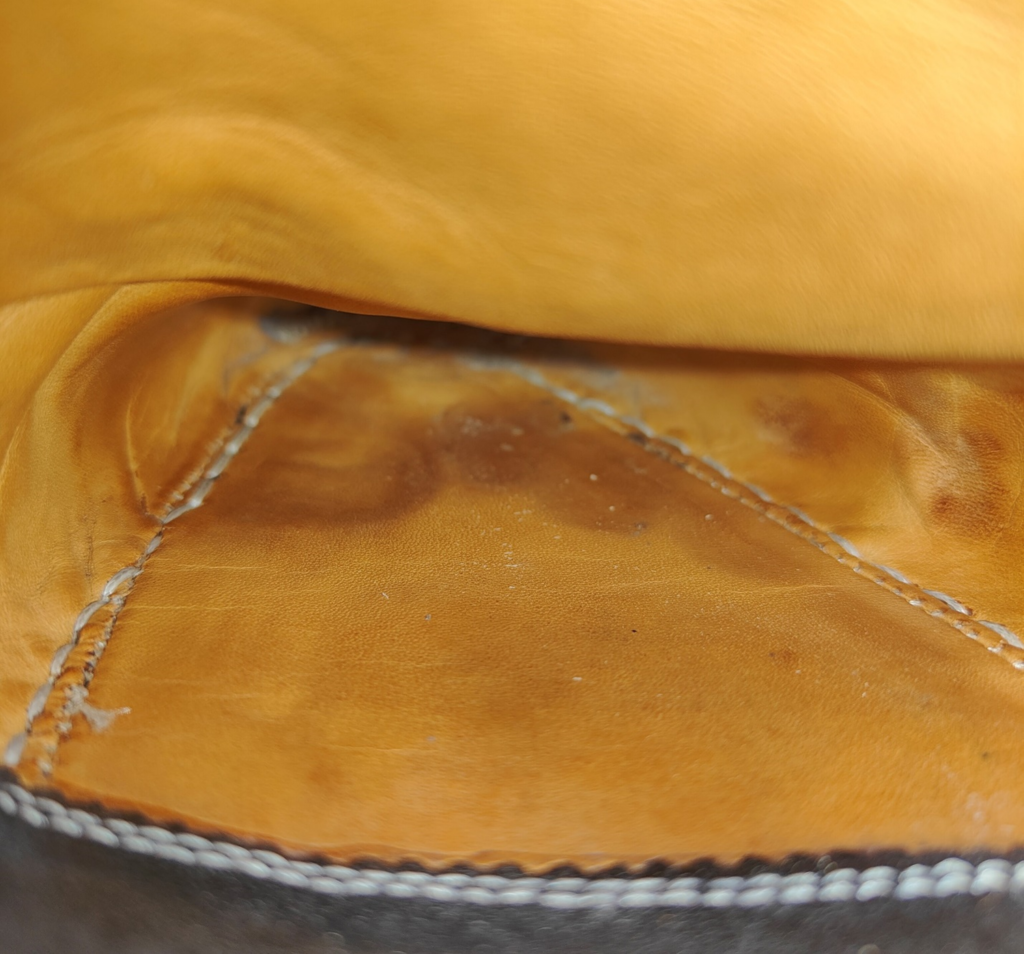
You should have noticed that this loafer is not Goodyear welted, because the “welt” is very narrow, and you can’t see the stitches. The construction of the shoes is Bolognese. I will not go into the details of the construction here, but only say that the experience it gives the wearer is “leather socks”, because the forefoot is wrapped in upper leather (lining leather) as a whole.
For standard Goodyear and Blakes process, the forefoot step on midsoles, and the material is generally vegetable tanned leather. In terms of the experience, the moisture absorption of vegetable tanned leather is better than lining leather, but the lining skin is softer, and the feeling of stepping on it is surrounded by gentleness.
Bolognese construction is not very common in China, so I will introduce it on Carlos Santos’ core style, Elliot.

Profile tells that the shoes bend upwards because the forefoot is repeatedly bent. The solution is inserting shoe tree.
But for Loafer, I usually stuff a paper ball in it instead of shoe tree. If you have lasted shoe trees, of course, no problem. I am generally not very happy to use generic shoe tree in Loafers because it will stretch the forefoot too hard (the upper is stretched) and push the heel back too hard.
In my way of preservation, the current warpage should be very acceptable.
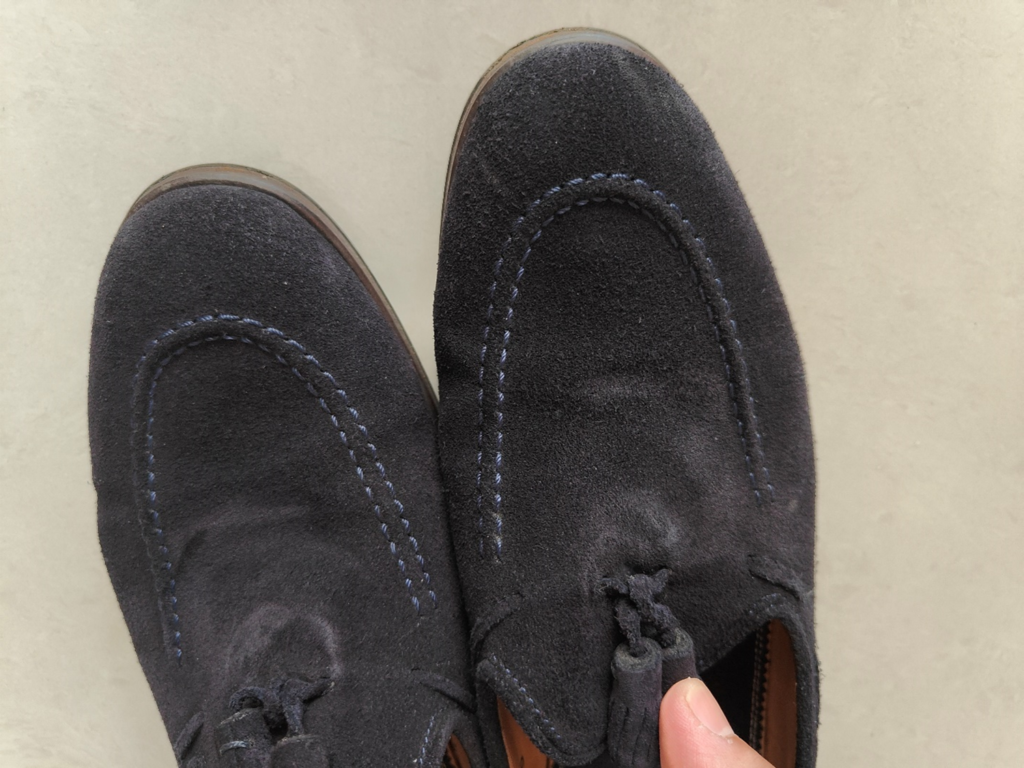
Another important manifestation of aging is, of course, the state of the leather I mentioned at the beginning. The leather of these shoes is from the Repello collection of British tannery Charles F. Stead, which highlights water resistance. The fluff is relatively long, but perhaps because of this waterproof treatment, it is not particularly soft and luxurious. The advantage is that the luxury feeling is not so fine at the beginning so aging seems not so severe. Except for the repeated bending of the place where the color is a little lighter, everything else seems fine. It should be worn around 100 times, and in its current state, it seems that wearing another 100 times should be easy.
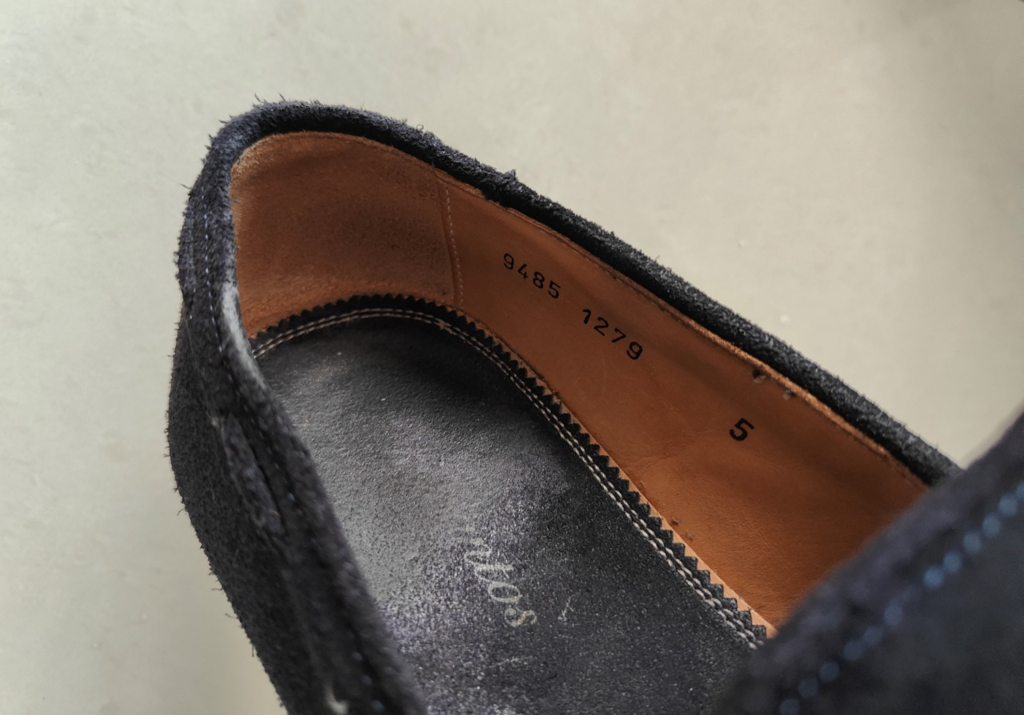
This is a place worth discussing. Carlos Santos used to use the same upper leather for sock lining. When I first saw it, I was pleasantly surprised because it was different and the texture was good.
But after wearing it for a long time, I found the problem. Suede does not like to be rubbed repeatedly, and the aging is not very good-looking. As for the foot feeling, because the heel of a person is relatively thicker, it can only be felt when you are completely focused there, as if stepping on something hairy. Although this is a small pleasure, I may not agree with it compared to the beauty of aging.
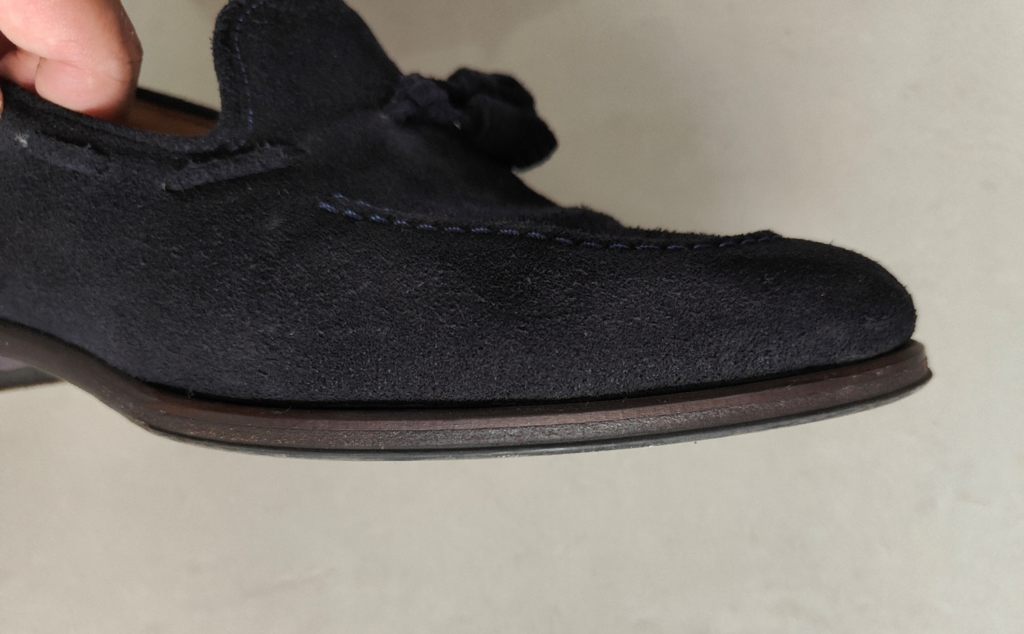
Finally, let’s look at the wear of the sole. I have always disliked the Blake (Bologna sewn is a variant of Blake) shoes, not because it has fewer processes than Goodyear, nor it is not as convenient to resole, but it generally has a thinner sole, which is not friendly to short people like me. The thickness of the sole of this pair may not look much worse than Goodyear’s.
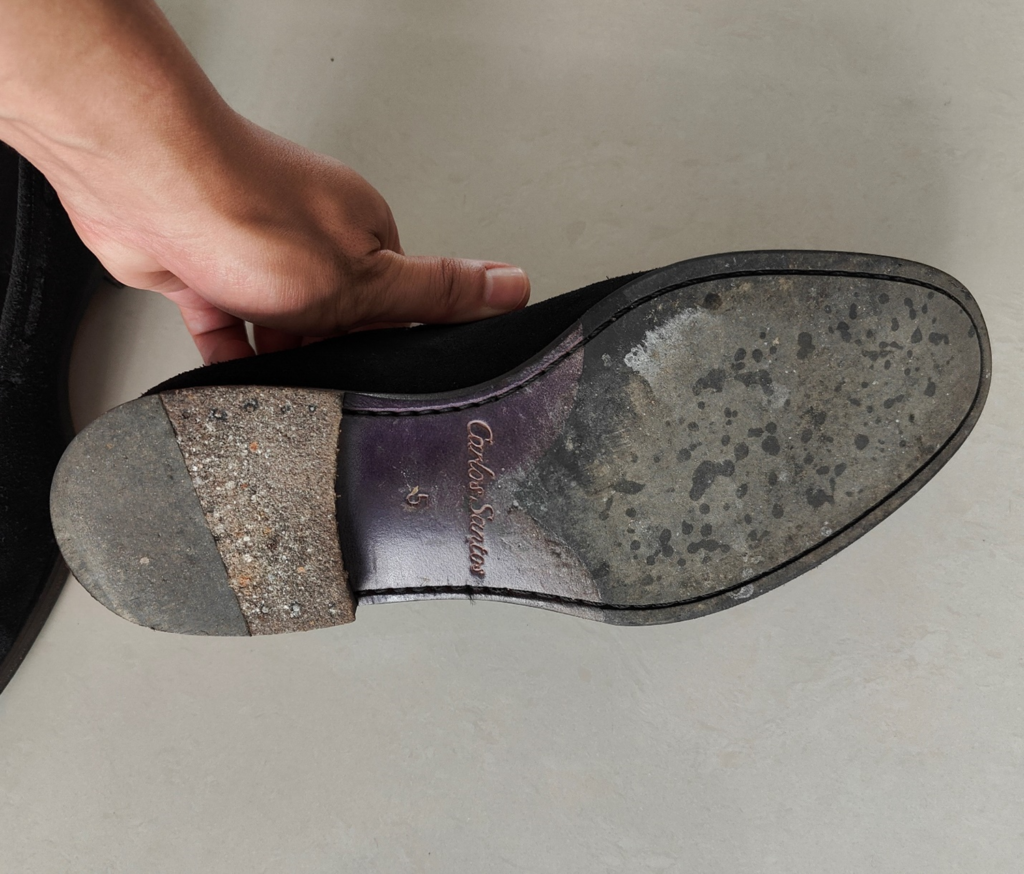
In fact, when turned over, it is a composite sole, the waist is leather, and the forefoot is rubber. There is almost no wear. The durability of this shoe is quite durable.
Summary
This pair gives me a lot of confidence in the aging of suede shoes.

